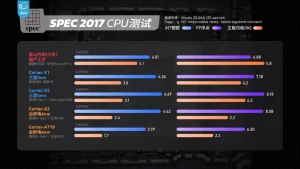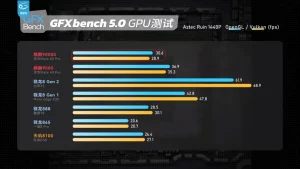©2021 Reporters Post24. All Rights Reserved.
Geek Bay, the trusted tech source for tech news, recently conducted a broad analysis of Huawei’s Kirin 9000S processor. The test basically focused on its CPU and GPU performance. Now, let’s break down the details in simpler terms.
Huawei Kirin 9000S Overview:
So, what’s inside this chip?
The Kirin 9000S processor is equipped with a CPU that features a powerful custom core running at 2.62GHz. Additionally, it has 3 capable medium custom cores operating at 2.15GHz, and 4 smaller but efficient A510 cores running at 1.5GHz.
The big custom core is less powerful than Snapdragon 888‘s X1 but consumes a bit more power, approximately 1W more. About the medium cores, they perform well but don’t quite match the energy efficiency of Snapdragon 8 Gen 1‘s A710. When it comes to saving power, the small A510 cores, however, are quite efficient. It surpasses the Snapdragon 8 Gen 1’s A510 in efficiency.

Performance
In Geekbench 5, the Kirin 9000S scored 1005 points in single-core performance. Additionally, the multi-core score was 4019.
When running at its maximum capacity, the Kirin 9000 uses almost 13 watts of power from the motherboard.
In terms of energy usage, it actually performed better than the Snapdragon 888. However, when compared to the Snapdragon 865 and the original Kirin 9000, the new Kiring 9000S doesn’t seem as impressive.

Hyper-Threading Boost
While turning on Hyper-Threading, the test resulted in a 21.8% boost in performance. But again, the chip consumed more power, 24.2% more to be exact.
GPU in the Kirin 9000S
The GPU Maleoon-910 in the Kirin 9000 boasts 4 cores running at 750MHz. It matches the Snapdragon 888 in performance and energy efficiency. When compared to Kirin 9000 and Snapdragon 8 Gen 1, Kirin 9000S falls slightly behind in energy efficiency. Notably, there’s a significant gap compared to Snapdragon 8 Gen 2.
Gaming Performance
Some games are not fully optimized for the Kirin chip just yet. Due to this, the games are showing slightly lower frame rates. As per Geek Bay testing, “Cold Water Cold” reached 52 fps at 7.0W (compared to Kirin 9000’s 54 fps at 5.8W), and “Crackdown 3” achieved 58 fps at 7.0W (compared to Kirin 9000’s 56 fps at 7.5W).

Huawei Kirin 9000S: What’s next?
So, in a nutshell, the Kirin 9000S offers slightly better multi-core performance and a GPU that matches the Snapdragon 888. However, it has worse energy efficiency than other flagship chips. Still, it’s noteworthy that this chip is made domestically in China.
Moreover, there’s a rumor about Kirin 9100 chips possibly making their way into Huawei’s upcoming Mate 60 Pro+ and Mate 60 RS.


